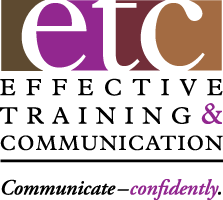Foonman Enterprises Senior Sales Rep Pete Andrews arrived at work early Tuesday so he could help his boss Tony prepare for the big sales pitch to Glitz’O’Matic that afternoon. He hadn’t even gotten his coffee when Marketing VP Ralph burst into his cubicle.
“Pete, I need you to handle the pitch this afternoon. Tony slipped on the ice in his driveway this morning and being treated for a fractured foot.”
“No problem-I got this,” said Pete, who was actually better at sales pitches than Tony and enjoyed them more … but that’s another story.
Then, Ralph said something that changed everything, especially Pete’s confidence. “Oh, almost forgot—the client wants the pitch via Zoom. Can do?”
“Can do …” said Pete, starting to panic. He’d delivered lots of sales pitches before. And he had also led many meetings via Zoom … but he’s never delivered a pitch via Zoom! He stared out the window, hoping for a magic answer to his problem.
Then, the solution hit him. “Well, duuhhh,” said Pete to himself. “I’ll just combine sales pitch best practices I’ve used for years with Zoom meeting best practices I had to learn quickly because of COVID … and see what happens.”
And what happens is that Pete nails the pitch, closes the sale, and earns a nice bonus. Pete was happy, and Ralph was very happy; Foonman Ent. had been trying unsuccessfully to sign Glitz-O-Matic for months.
Since the devil is in the details, let’s go back to square one and see what Pete did to win the day.
First, he reviewed and checked off these seven sales pitch best practices to make sure his messaging complied:
1. Realize the difference between the pitch goal and objective.
Check. His goal is to win the business, but his objective is to provide the Glitz-O-Matic team with all the information they need to make factual, smart, and fast decisions.
2. Do all your homework in the discovery stage by asking lots of good questions to learn what they need, want… and can afford.
Check. He and Tony had spent the time asking smart questions. They had learned that the rebranding project was very important to Glitz-O-Matic because they were positioning the company to be attractive to a VC firm. And the last provider didn’t work out because of cost overrides and poor quality of the deliverables.
3. Ask what kind of information they want in the pitch.
Check. Based off of their conversations, he was confident that they were appropriately positioned to deliver what the prospective client wanted.
4. Create a prospect-centric proposal.
Check. They were using the sales pitch format template they had spent weeks last year designing. It avoided acronyms or jargon and communicated in simple language. And, it nailed the introduction by indicating Glitz’O’Matic’s investment of time, staff resources, and dollars up front.
5. Ensure the information you share clearly reflects what they said they needed or wanted.
Check. Pete’s restatement of the prospect’s limitations of time, scope, and budget showed that he had understood their needs and paid attention during discovery.
6. Stress your value proposition.
Check. Pete really enjoyed telling prospects why they should buy from Foonman with enthusiasm and confidence.
7. End your pitch with a strong, concise, and enthusiastic summary.
Check. They would end by indicating how they were ideally positioned to provide Glitz’O’Matic with what they needed, wanted … and could afford. And, ask for the sale, of course.
Pete leaned back in his chair, sipped what was now a cold cup of coffee and realized the pitch content was totally ready. “But, what about delivering it via Zoom?” he thought. “That changes everything … or does it?” he wondered.
Next month, find out what changes to make when delivering a sales pitch virtually.
(Note – this content first appeared in the Council of Smaller Enterprises ‘Mind Your Business’ e-letter in February,)
